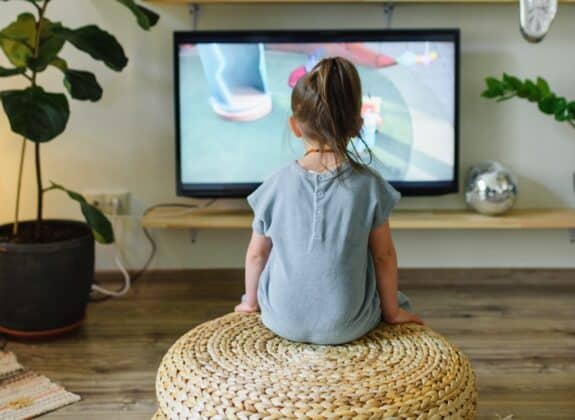We, parents, have heard the ugly truth, over and over, about the negative effects that television viewing can have on our children. But trying to find a balance between entertainment and over-exposure is sometimes hard for some families to do. A new study has found that it may be as simple as just changing the channel.
“It’s not just about turning off the television,” lead author Dr. Dimitri Christakis, a pediatrician and researcher at Seattle Children’s Research Institute told the online medical journal, Pediatrics. “What children watch is as important as how much they watch.”
This conclusion came after researchers from Seattle Children’s Research Institute followed the progress of 565 Seattle parents and their children. Parents were periodically asked to fill out television-watching diaries that disclosed what kind of shows their children watched. They were also given a questionnaire that asked about their child’s behavior.
Half of the parents received coaching for six months on the benefits of watching educational shows like “Sesame Street,” “Dora the Explorer” over more violent shows like “Power Rangers.” The other half received six months of coaching on healthy eating habits. Researchers then compared the results of the two groups – those in which parents had been coached on television viewing and those that had received coaching on nutrition instead of television viewing.
Before the study, children averaged about 1 ½ hours of television, video and computer game time a day. Violent content made up about a quarter of that time. Researchers found that, by the end of the study, this had increased by up to 10 minutes. But those that were in the television coaching group increased their time with positive shows while the eating group tended to watch more violent television.
At the six-month mark, despite the differences in violent and non-violent show content, researchers found improvement in the behavior of both groups of children. However, there was more improvement at this time in the group that had received coaching on television viewing. Most interesting (and pleasing to the researchers) was the fact that boys that lived in low-income households seemed to show the most short-term benefit.
“That’s important because they are at the greatest risk, both for being perpetrators of aggression in real life, but also being victims of aggression,” Christakis said.
Researchers did note, however, that there was no meaningful difference between the two groups at one year. And there are some noted flaws about the study itself. For example, although parents weren’t informed of the purpose of the study, many of them may have figured it out; this could have affected the study’s results.
Dr. Michael Rich, director of the Center on Media and Child Health at Children’s Hospital Boston, who was not involved in the study, says that he’s glad to see researchers like Christakis looking at the possible positive influences of television on young children.
“I think it’s fabulous that people are looking on the positive side,” he told Yahoo News. “Because no one’s going to stop watching TV, we have to have viable alternatives for kids.”
Nancy Jensen, a mother who participated in the study with her six-year-old daughter told Yahoo News that the study was a real wake-up call for her family.
“I didn’t realize how much Elizabeth was watching and how much she was watching on her own,” she said.
Nancy says that her daughter’s behavior has improved since the study, and she say that she has opted to continue careful monitoring of the television programs that Elizabeth and her two-year-old brother, Joe, watch. Nancy says she’s also replaced some of her children’s television viewing time with other activities, like games, art and outdoor play. And interestingly enough, a recent visit to their home indicated that the children are much happier with the new arrangement anyway.
Related Articles:
- Study: Moms Choices Affect Baby’s Gut Bacteria
- More Mothers Breastfeeding for Longer Periods, CDC Says
- Study: Most Doctors Fail to Recognize Underweight Children and the Potential Complications







